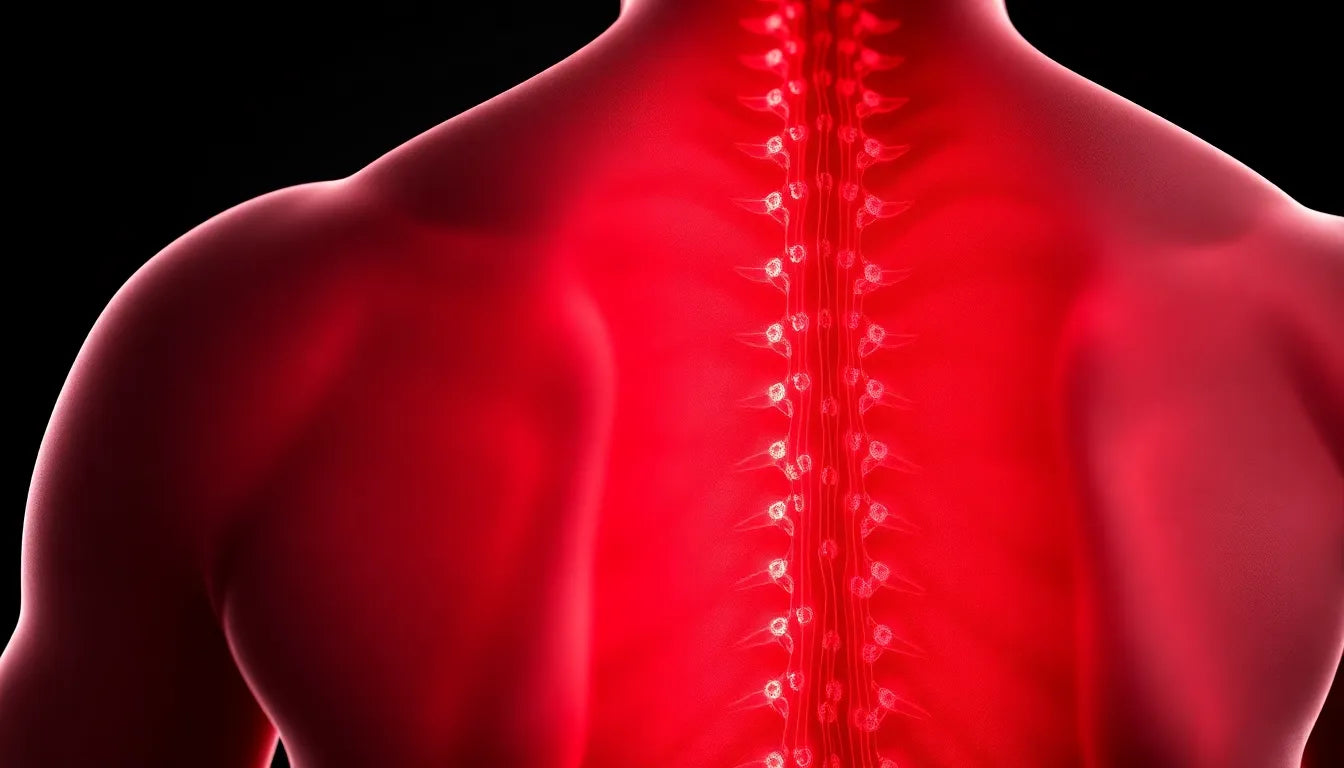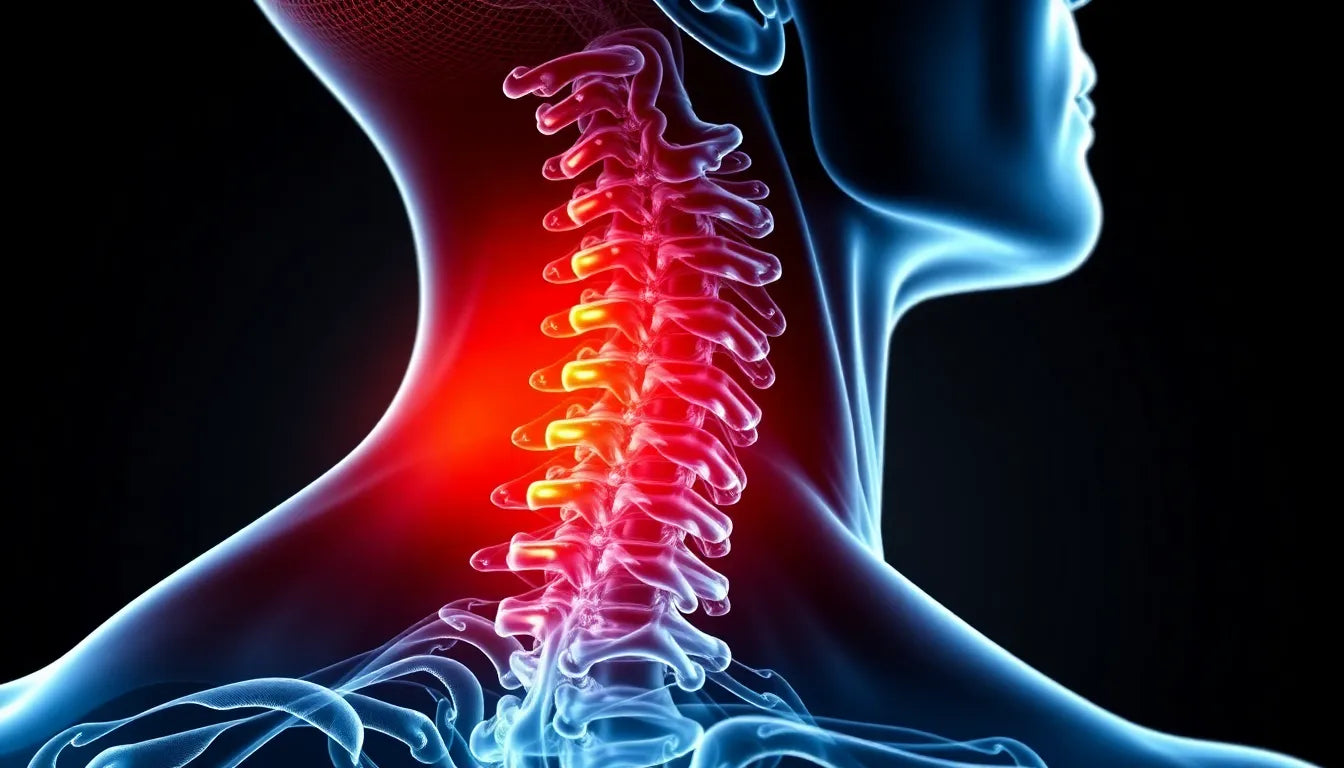Back pain caused by a herniated disc can be a debilitating condition that affects daily life and overall well-being. Understanding what a herniated disc is and how it impacts the body is crucial for finding effective relief and improving quality of life. At the core of this issue is the lumbar region of the spine, where herniated discs are most commonly found.
What is a herniated disc?
A herniated disc occurs when the soft inner gel of a spinal disc pushes through a tear in the tougher outer layer. This often happens in the lumbar spine, the lower back region, which bears much of the body's weight and is involved in many everyday movements. This protrusion can press on nearby nerves, leading to pain, numbness, or weakness in the back and legs. The condition can arise from wear and tear over time or from sudden injuries, such as lifting heavy objects improperly.
Prevalence and demographics
Herniated discs are a common cause of back pain, affecting people of various ages, though they are most prevalent in individuals aged 30 to 50. The condition is slightly more common in men than in women. Factors such as genetics, occupation, and lifestyle can increase the risk of developing a herniated disc. For instance, jobs that involve repetitive lifting, bending, or twisting can contribute to disc degeneration over time.
The importance of addressing back pain
Early intervention is key when dealing with back pain from a herniated disc. Ignoring the symptoms can lead to chronic pain and further complications, significantly impacting one's quality of life. Addressing the pain promptly can prevent the condition from worsening and help individuals return to their normal activities more quickly. It can also reduce the need for more invasive treatments, such as surgery.
Are you struggling to find relief from persistent back pain? Understanding your condition is the first step to recovery. By recognizing the signs of a herniated disc and seeking appropriate treatment, you can take control of your health and begin your journey toward pain relief and improved mobility.
Conservative management strategies for herniated discs
When it comes to treating back pain caused by a herniated disc, conservative management is often the first line of defense. These strategies aim to alleviate pain and improve function without the need for invasive procedures. The cornerstone of this approach includes rest, medications, and physical therapy.
Initial treatments for herniated disc pain
Rest is crucial in the initial phase of treatment. However, it's important to balance rest with gentle activity to prevent stiffness and weakness. Non-steroidal anti-inflammatory drugs (NSAIDs) are commonly used to reduce inflammation and relieve pain. Physical therapy plays a vital role in recovery, focusing on exercises that strengthen the core and back muscles to support the spine and prevent future injuries. Most herniated discs improve within three to four months with these conservative measures.
Medications for managing pain
In addition to NSAIDs, other medications can be used to manage pain and discomfort. Acetaminophen is an alternative for pain relief, though it should be used with caution to avoid liver damage. Muscle relaxants may be prescribed to alleviate muscle spasms, although their long-term effectiveness is limited. For nerve-related pain, agents like gabapentin can be effective, but they require a prescription and careful monitoring by a healthcare provider.
| Medication type | Purpose | Considerations |
|---|---|---|
| NSAIDs | Reduce inflammation | Short-term use recommended |
| Acetaminophen | Pain relief | Monitor dosage to avoid liver damage |
| Muscle relaxants | Relieve muscle spasms | Limited evidence for long-term use |
| Nerve-pain agents | Target nerve-related pain | Requires prescription |
Advanced and alternative therapies
While conservative treatments are effective for many, some individuals may require additional interventions. Advanced therapies such as epidural steroid injections can help reduce inflammation and pain, allowing patients to engage more effectively in physical therapy. These injections are particularly beneficial when other treatments have not provided sufficient relief.
Exploring alternative therapies
Alternative therapies have gained popularity as complementary treatments for back pain due to herniated discs. Acupuncture, for instance, is believed to promote endogenous healing and provide pain relief by stimulating specific points on the body. Chiropractic care aims to realign the spine, thereby relieving pressure on the nerves and improving overall function. These therapies are increasingly accepted in mainstream care and can be valuable adjuncts to traditional treatments.
- Acupuncture: Promotes endogenous healing and pain relief.
- Chiropractic care: Aims to realign the spine and relieve pressure on nerves.
In conclusion, while back pain from a herniated disc can be challenging, a combination of conservative management and alternative therapies offers a comprehensive approach to relief. By understanding and exploring these options, individuals can find effective strategies to manage their pain and improve their quality of life.
When to consider surgery for herniated discs
While most cases of back pain from herniated discs improve with conservative and alternative therapies, surgery may become necessary in certain situations. Indications for surgery typically include persistent pain that does not respond to other treatments, significant neurological deficits such as weakness or numbness, or severe symptoms like loss of bladder or bowel control. In these cases, surgical intervention can provide relief and prevent further complications.
Deciding to undergo surgery is a significant decision that should be made in consultation with a healthcare professional. The risks and benefits must be carefully weighed, as surgery carries potential complications. However, for those who have exhausted other options, surgery can offer a resolution to debilitating symptoms and improve quality of life.
Conclusion and practical tips for managing herniated disc pain
In summary, finding relief from back pain caused by herniated discs often involves a combination of conservative management, alternative therapies, and, in some cases, surgical intervention. The effectiveness of these treatments varies from person to person, emphasizing the importance of a tailored approach to care.
For those managing herniated disc pain, practical lifestyle modifications can support recovery and prevent recurrence. Maintaining a healthy weight, engaging in regular exercise, and practicing good posture are crucial elements. Ergonomic aids, such as supportive seating and proper lifting techniques, can also play a vital role in managing symptoms and promoting long-term spinal health.
Frequently asked questions
What are the symptoms of a herniated disc?
Symptoms of a herniated disc include lower back pain, leg pain, numbness, tingling, and muscle weakness. These symptoms can vary in intensity and may worsen with certain activities.
How long does recovery from a herniated disc take?
Most individuals experience improvement within three to four months with conservative treatment. However, recovery time can vary depending on the severity of the herniation and adherence to treatment plans.
Can herniated discs heal on their own?
Yes, many herniated discs can heal without surgical intervention. Conservative treatments such as rest, physical therapy, and medications often lead to significant improvements.
Is surgery always required for a herniated disc?
No, surgery is not always necessary. It is typically reserved for severe cases where conservative treatments have failed, or when there are significant neurological symptoms.
What lifestyle changes can help manage a herniated disc?
Lifestyle changes such as regular exercise, weight management, and ergonomic adjustments can help manage symptoms and support recovery. Incorporating these changes into daily routines can also help prevent future issues.
Sources
- American Academy of Orthopaedic Surgeons (2023). "Herniated Disk in the Lower Back." OrthoInfo.
- NYU Langone Health (2023). "Herniated Disc in Adults: Treatments."
- WebMD (2023). "Herniated Disc Overview."
- Sciatica.com (2023). "Herniated Disc."
- American Association of Neurological Surgeons (2023). "Herniated Disc."
- Cuellar Spine (2023). "Herniated Disc Treatments and Options."


















